1. Leadership
1.1. inter-personal skills
1.1.1. building alignment
1.1.1.1. The ability to discover and align individual purposes and values with those of the organization. Making sure that all share the same understanding.
1.1.2. creating empowerment
1.1.2.1. Giving people the space to decide, to contribute and to co-create their future and that of the organization.
1.1.3. building engagement
1.1.3.1. Motivating people by helping them to do what they are good at and supporting their commitment.
1.1.4. visioning
1.1.4.1. Being able to see the broader picture and communicate it to others.
1.1.5. building trust
1.1.5.1. Changing the culture of an organization into a place where people trust each other.
1.2. intra-personal skills
1.2.1. deep reflection
1.2.1.1. The skill to reflect on one self. Taking a true meta position and see oneself from outside.
1.2.2. courage
1.2.2.1. The will to act upon what is best for the system.
1.2.3. commitment
1.2.3.1. Being ready to give it what it takes because this is what you want to do!
1.2.4. walking the talk
1.2.4.1. Being a role model for all people who are expected to embrace the change.
1.2.5. inspiration
1.2.5.1. Igniting the fire in other's eyes by telling stories that matter.
1.2.6. accountability
1.2.6.1. Saying what you will do and doing what you have said.
1.2.7. mastery
1.2.7.1. Constantly working on self development. Never stop learning.
1.3. models
1.3.1. distributed leadership
1.3.1.1. A system which encourages everybody to be a leader.
1.3.2. leadership journey
1.3.2.1. An individual path to mastery: Hearing your call, meeting and overcoming obstacles, creating alliances, returning to the source.
1.3.3. value based leadership
1.3.3.1. Growing organizations in which all members act according to deep anchored values.
1.4. process skills
1.4.1. mentoring
1.4.1.1. Helping people to grow by providing guidance based on experience.
1.4.2. coaching
1.4.2.1. Helping people to discover their path to personal development.
1.4.3. inquiry
1.4.3.1. Asking high value questions in order to learn something new. Keep asking questions.
1.4.4. delegation
1.4.4.1. Giving responsibilities to others and letting go control.
1.4.5. facilitation
1.4.5.1. The ability to understand group dynamics and helping groups to be effective. Providing and holding space and time.
1.4.6. virtual facilitation
1.4.6.1. The skill to promote dialogue and collaboration in distributed teams
1.4.7. integrative negotiation skills
1.4.7.1. The ability to connect stakeholders with diverse mental maps.
2. Change
2.1. dynamics
2.1.1. community
2.1.1.1. Change happens in intact communities in which trust can be built.
2.1.2. collaboration
2.1.2.1. Any obstacles to collaboration must be removed and replaced with processes that foster collaboration.
2.1.3. human needs
2.1.3.1. All people have purposes, concerns and circumstances. Purposes: what's important to them; concerns: what they are worried about; circumstances: what affects their effectiveness.
2.1.4. co-creation
2.1.4.1. Change is a joint effort of all involved. In the absence of a co-creative approach, they will not commit.
2.1.5. power
2.1.5.1. The urge to gain and retain power is one of the most limiting hidden factors in change projects.
2.1.6. visions & values
2.1.6.1. A vision of the future state motivates people to move towards it. Deep personal values and organizational values need to be in harmony for change to happen.
2.1.7. resistance
2.1.7.1. People don't resist change. But they refuse to cooperate if their purposes, concerns and circumstances are not respected.
2.1.8. conflict resolution
2.1.8.1. Change always comes along with conflicts which need to be addressed openly. Their needs to be a fair balance of interests.
2.1.9. leadership
2.1.9.1. Without commitment of leadership at all levels, people won't follow. Leaders need to walk the talk.
2.1.10. space
2.1.10.1. Appropriate physical and virtual spaces that enable collaboration and change.
2.1.11. passion and responsibility
2.1.11.1. When people are passionate about change and take personal responsibility, change happens.
2.2. application
2.2.1. celebration
2.2.1.1. Successes in the Change Journey need to be celebrated.
2.2.2. planning
2.2.2.1. Planning of change projects is important and enough resources need to be made available. However, a change plan is just a rough guidance and needs to be flexible.
2.2.3. communication
2.2.3.1. Change processes need multi-directional and multi-channel communication efforts.
2.2.4. attitudes
2.2.4.1. Openness, honesty, innovativeness, accountability, curiosity are key attitudes for change agents.
2.2.5. skills
2.2.5.1. Creativity, inquiry & advocacy, coaching, facilitating, planning skills and much more
2.2.6. change agents
2.2.6.1. A group of people which is empowered to act as multiplicators.
2.2.7. monitoring
2.2.7.1. Constant and honest assessment of the progress in a change process.
2.2.8. tools
2.2.8.1. The richness of tools and methods that help to change attitudes and enable co-creation.
2.2.9. design
2.2.9.1. A holistic view on the change process identifying a sequence of interventions.
2.2.10. intervention
2.2.10.1. A singular or repetitive activity with the intention to either unfreeze, move or freeze the system.
2.2.11. intention
2.2.11.1. An expression of why the change is necessary
2.3. systems
2.3.1. large systems change
2.3.1.1. Methods to move large and inert systems quickly.
2.3.2. mental maps
2.3.2.1. The fact that human beings can only process a minor part of information available for them, on which they build deeply anchored assumptions about the world around them.
2.3.3. complexity
2.3.3.1. An organization is a complex social system which cannot be explained with linear thinking.
2.3.4. change journey
2.3.4.1. Acknowledgement of the fact that each change process is different.
2.3.5. uncertainty
2.3.5.1. Change is paired with a high level of uncertainty and risk which cannot be avoided.
